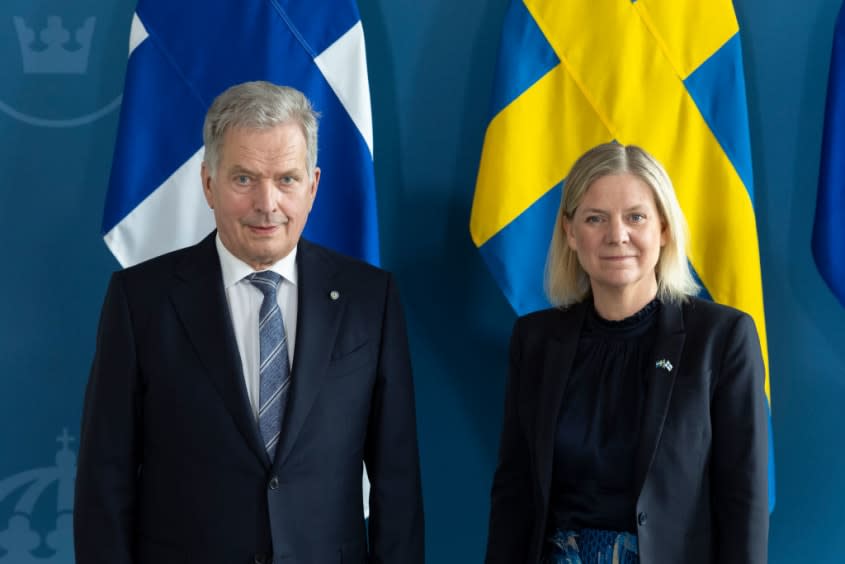Finland and Sweden formally apply to join NATO

Finland and Sweden formally applied to join NATO on Wednesday, delivering letters of intent to the Western military alliance's headquarters in Brussels. The application begins a months-long process of accession, with both Nordic countries expected to win membership in a matter of months, bringing the number of member states to 32. "We are leaving one era and beginning another," Swedish Prime Minister Magdalena Andersson said Monday.
Sweden and Finland have been militarily non-aligned for decades or, in Sweden's case, centuries. But they are both members of the European Union and they already participate in military exercises with NATO.
Still, "their official accession would fill the largest remaining gap in NATO's map of Europe, and do so in an increasingly volatile part of the continent," The Walls Street Journal reports. "With Arctic ice melting and shipping increasing near the North Pole, air and naval activity in the region has increased over recent years. The Baltic Sea — Russian vessels' shortest route to the Atlantic Ocean — would become overwhelmingly controlled by NATO allies."
Andersson and Finnish President Saudi Niinisto are scheduled to discuss NATO membership and pre-accession security when President Biden hosts them at the White House on Thursday. The U.S. and most other NATO members have enthusiastically welcomed the two countries into the alliance, though Turkey has expressed reservations and laid out demands before it ratifies the addition of Sweden and Finland. Andersson and Niinisto said in a joint press conference they were surprised by Turkey's opposition and optimistic Ankara's concerns can be addressed.
There was little public or political support in Sweden or Finland for joining NATO before Russia invaded Ukraine. On Tuesday, Finland's parliament approved joining the alliance 188-8. "This is an extraordinary development given where we were in February," Anna Wieslander, director for Northern Europe at the Atlantic Council, tells The Washington Post. "Russia wanted to turn back time, to go back to the Cold War, to fragment and weaken the West," but "now, in May, we are here."
You may also like
Russia's thwarted Ukraine river crossing was so bloody, pro-Russia war bloggers are publicly griping

